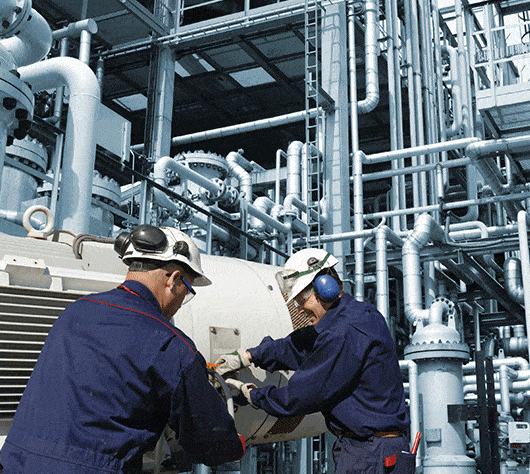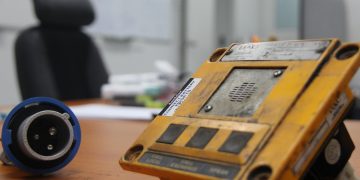Roar Solutions Things To Know Before You Get This
Roar Solutions Things To Know Before You Get This
Blog Article
An Unbiased View of Roar Solutions
Table of ContentsThe Roar Solutions PDFsThe 9-Minute Rule for Roar SolutionsLittle Known Questions About Roar Solutions.
In order to shield installations from a prospective explosion an approach of evaluating and classifying a possibly unsafe area is required. The function of this is to make sure the proper option and installation of equipment to ultimately avoid a surge and to make certain safety and security of life.
(https://letterboxd.com/roarsolutions/)
No devices must be set up where the surface area temperature of the devices is better than the ignition temperature level of the provided risk. Below are some common dust hazardous and their minimal ignition temperature level. Coal Dirt 380C 225C Polythene 420C (melts) Methyl Cellulose 420C 320C Starch 460C 435C Flour 490C 340C Sugar 490C 460C Grain Dust 510C 300C Phenolic Material 530C > 450C Aluminium 590C > 450C PVC 700C > 450C Residue 810C 570C The probability of the risk existing in a concentration high adequate to create an ignition will certainly vary from location to area.
In order to identify this danger a setup is split into areas of threat relying on the amount of time the unsafe exists. These areas are referred to as Areas. For gases and vapours and dusts and fibers there are 3 zones. Area 0 Zone 20 A hazardous ambience is extremely likely to be existing and might be existing for extended periods of time (> 1000 hours each year) and even continually Zone 1 Area 21 A dangerous atmosphere is feasible but not likely to be present for extended periods of time (> 10 450 C [842 F] A classification of T6 suggests the minimum ignition temperature level is > 85 C [185 F] Dangerous location electrical devices possibly developed for use in greater ambient temperatures. This would showed on the rating plate e.g. EExe II C T3 Ta + 60C( This suggests at 60C ambient T3 will not be surpassed) T1 T1, T2, T3, T4, T5, T6 T2 T2, T3, T4, T5, T6 T3 T3, T4, T5, T6 T4 T4, T5, T6 T5 T5, T6 T6 T6 A T Course rating of T1 indicates the optimum surface temperature created by the instrument at 40 C is 450 C. Presuming the linked T Course and Temperature level rating for the devices are ideal for the area, you can always utilize an instrument with a more rigid Division score than needed for the location. There isn't a clear solution to this concern unfortunately. It truly does rely on the kind of equipment and what repair work need to be accomplished. Devices with details examination treatments that can not be performed in the field in order to achieve/maintain third event score. Have to return to the factory if it is before the equipment's service. Field Repair Service By Authorised Employee: Difficult screening might not be called for nonetheless details treatments might need to be followed in order for the tools to keep its 3rd party score. Authorized workers need to be utilized to carry out the work appropriately Fixing have to be a like for like substitute. New element must be considered as a direct substitute needing no special screening of the devices after the repair work is total. Each item of devices with a hazardous score ought to be reviewed separately. These are described at a high level listed below, but also for even more in-depth information, please refer straight to the standards.
Roar Solutions - Questions
The equipment register is a thorough data source of equipment records that includes a minimum set of fields to determine each thing's area, technological parameters, Ex category, age, and ecological data. This info is critical for tracking and managing the equipment properly within hazardous areas. In contrast, for periodic or RBI sampling inspections, the grade will be a mix of Detailed and Close evaluations. The ratio of Detailed to Close inspections will be figured out by the Equipment Risk, which is evaluated based on ignition threat (the probability of a source of ignition versus the possibility of a flammable atmosphere )and the unsafe location classification
( Zone 0, 1, or 2). This variant will certainly additionally affect the resourcing demands for work preparation. As soon as Whole lots are defined, you can develop sampling strategies based upon the sample dimension of each Great deal, which refers to the variety of random equipment things to be checked. To figure out the required example size, 2 elements require to be examined: the size of the Great deal and Website the category of inspection, which suggests the degree of initiative that must be applied( lowered, typical, or raised )to the assessment of the Lot. By incorporating the classification of inspection with the Great deal dimension, you can then develop the suitable denial requirements for an example, implying the allowed number of malfunctioning items discovered within that example. For more information on this process, please refer to the Energy Institute Guidelines. The IEC 60079 basic advises that the maximum interval between inspections ought to not go beyond three years. EEHA evaluations will certainly also be carried out beyond RBI projects as part of arranged maintenance and tools overhauls or repair work. These evaluations can be attributed towards the RBI example dimensions within the affected Lots. EEHA evaluations are carried out to recognize mistakes in electric equipment. A weighted racking up system is crucial, as a single tool may have several mistakes, each with differing degrees of ignition threat. If the mixed rating of both assessments is less than twice the mistake rating, the Whole lot is regarded appropriate. If the Whole lot is still taken into consideration undesirable, it has to undergo a complete inspection or justification, which may trigger stricter assessment procedures. Accepted Great deal: The root causes of any type of faults are identified. If a common failing mode is found, additional tools might need maintenance. Faults are classified by severity( Safety and security, Honesty, House cleaning ), making sure that urgent issues are analyzed and attended to immediately to reduce any effect on security or operations. The EEHA database should track and record the lifecycle of mistakes together with the corrective activities taken. Executing a durable Risk-Based Assessment( RBI )technique is essential for ensuring compliance and safety and security in handling Electric Devices in Hazardous Locations( EEHA) (high voltage courses). Automated Mistake Rating and Lifecycle Administration: Easily manage faults and track their lifecycle to improve assessment accuracy. The introduction of this assistance for risk-based evaluation better strengthens Inspectivity's placement as a best-in-class service for governing compliance, in addition to for any kind of asset-centric inspection use instance. If you are interested in discovering more, we invite you to request a demo and uncover how our option can change your EEHA monitoring processes.
Getting The Roar Solutions To Work

In terms of eruptive risk, an unsafe area is an atmosphere in which an explosive environment exists (or may be anticipated to be existing) in quantities that need unique preventative measures for the construction, setup and usage of tools. Roar Training Solutions. In this short article we check out the difficulties dealt with in the work environment, the risk control steps, and the needed expertises to work safely
It issues of contemporary life that we make, store or manage a series of gases or liquids that are considered combustible, and an array of dusts that are considered flammable. These materials can, in certain problems, create eruptive atmospheres and these can have major and unfortunate consequences. The majority of us know with the fire triangular get rid of any kind of among the 3 elements and the fire can not occur, but what does this mean in the context of dangerous areas? When damaging this down right into its easiest terms it is basically: a combination of a specific amount of launch or leakage of a certain substance or product, blending with ambient oxygen, and the visibility of a resource of ignition.
In most circumstances, we can do little about the degrees of oxygen airborne, but we can have significant impact on resources of ignition, for instance electrical tools. Unsafe areas are documented on the unsafe location classification illustration and are determined on-site by the triangular "EX" sign. Below, amongst various other crucial info, areas are divided into 3 types depending on the threat, the probability and duration that an eruptive environment will certainly exist; Area 0 or 20 is deemed one of the most dangerous and Area 2 or 22 is considered the least.
Report this page